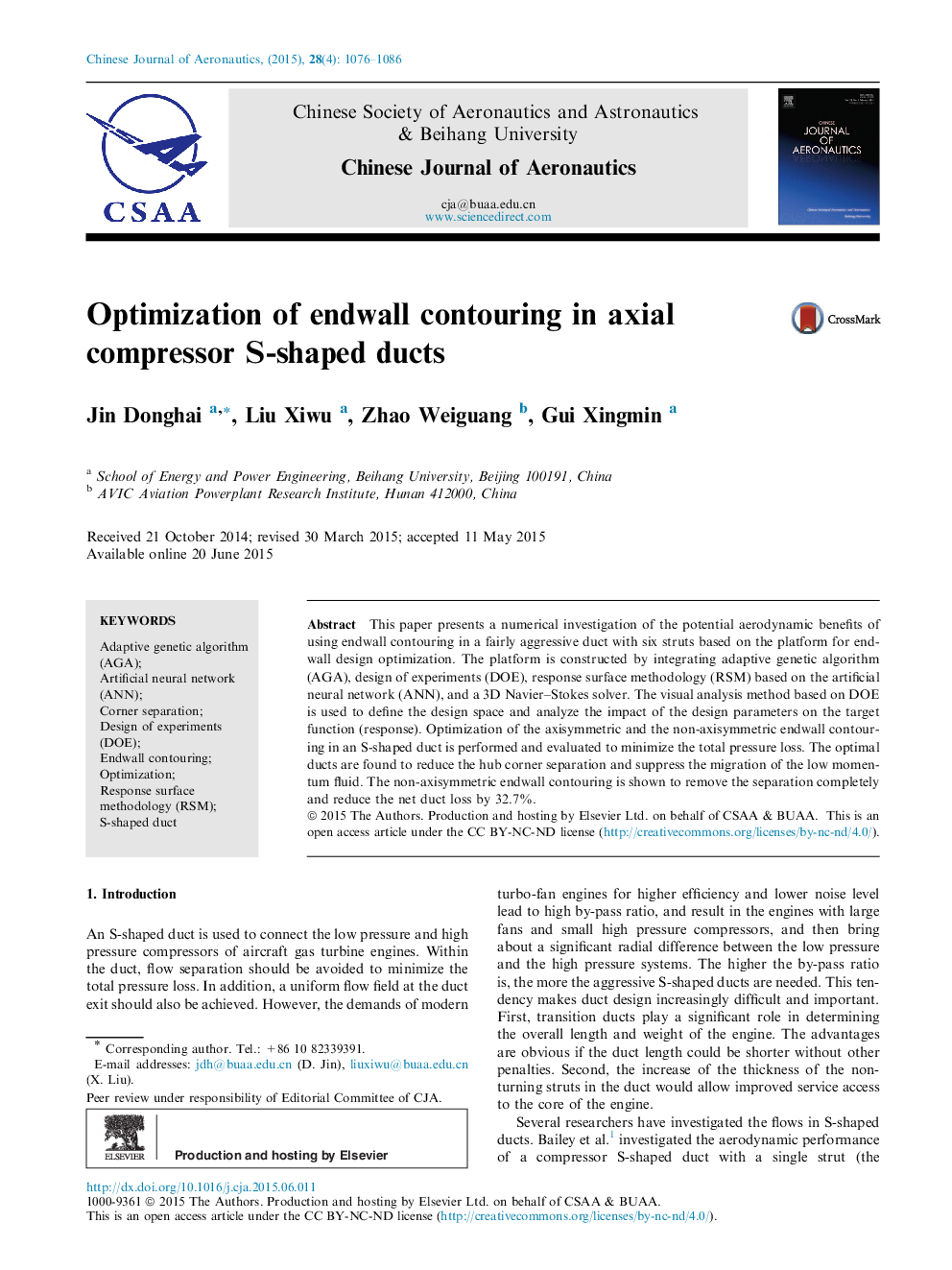| Article ID | Journal | Published Year | Pages | File Type |
|---|---|---|---|---|
| 765762 | Chinese Journal of Aeronautics | 2015 | 11 Pages |
This paper presents a numerical investigation of the potential aerodynamic benefits of using endwall contouring in a fairly aggressive duct with six struts based on the platform for endwall design optimization. The platform is constructed by integrating adaptive genetic algorithm (AGA), design of experiments (DOE), response surface methodology (RSM) based on the artificial neural network (ANN), and a 3D Navier–Stokes solver. The visual analysis method based on DOE is used to define the design space and analyze the impact of the design parameters on the target function (response). Optimization of the axisymmetric and the non-axisymmetric endwall contouring in an S-shaped duct is performed and evaluated to minimize the total pressure loss. The optimal ducts are found to reduce the hub corner separation and suppress the migration of the low momentum fluid. The non-axisymmetric endwall contouring is shown to remove the separation completely and reduce the net duct loss by 32.7%.
